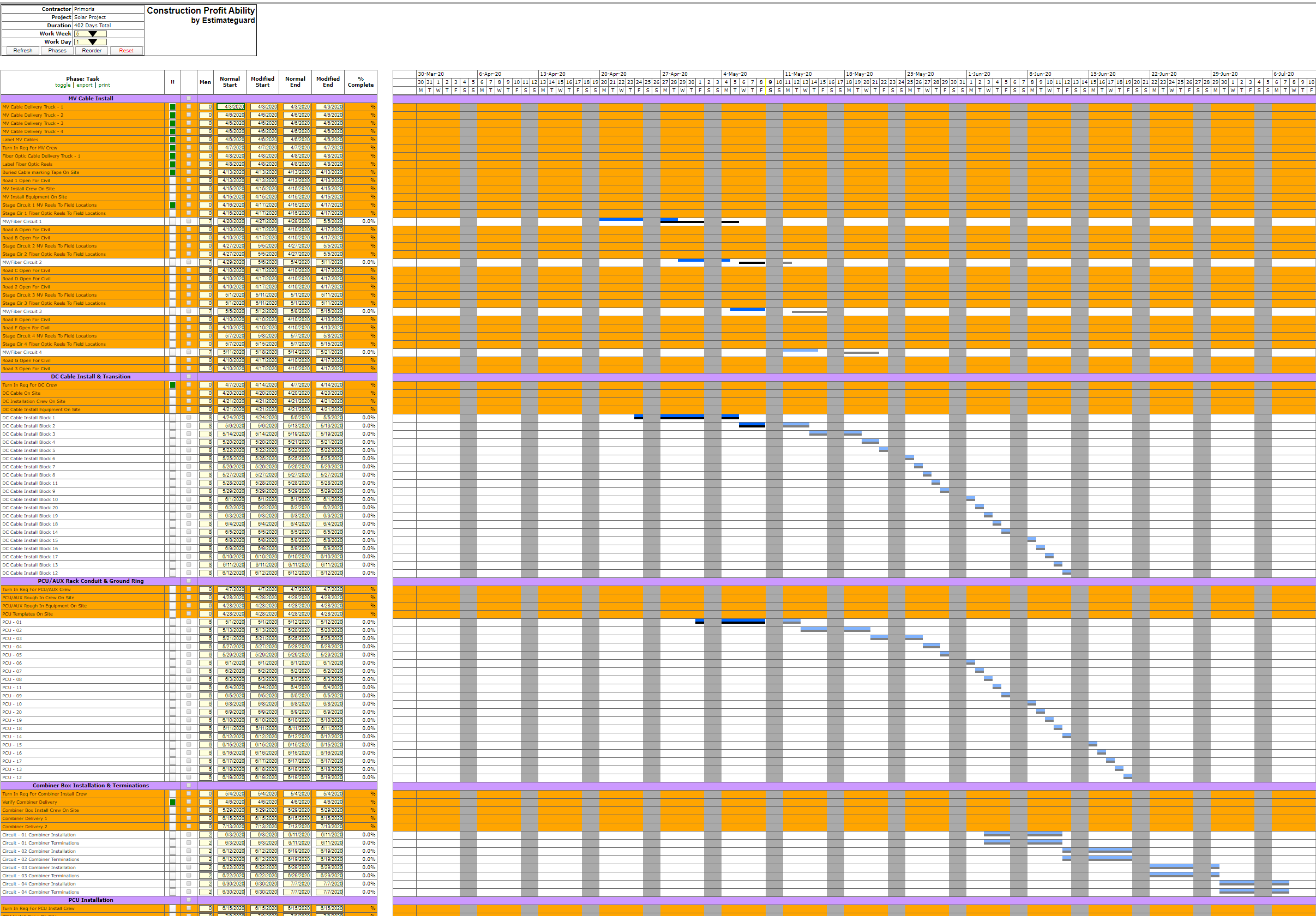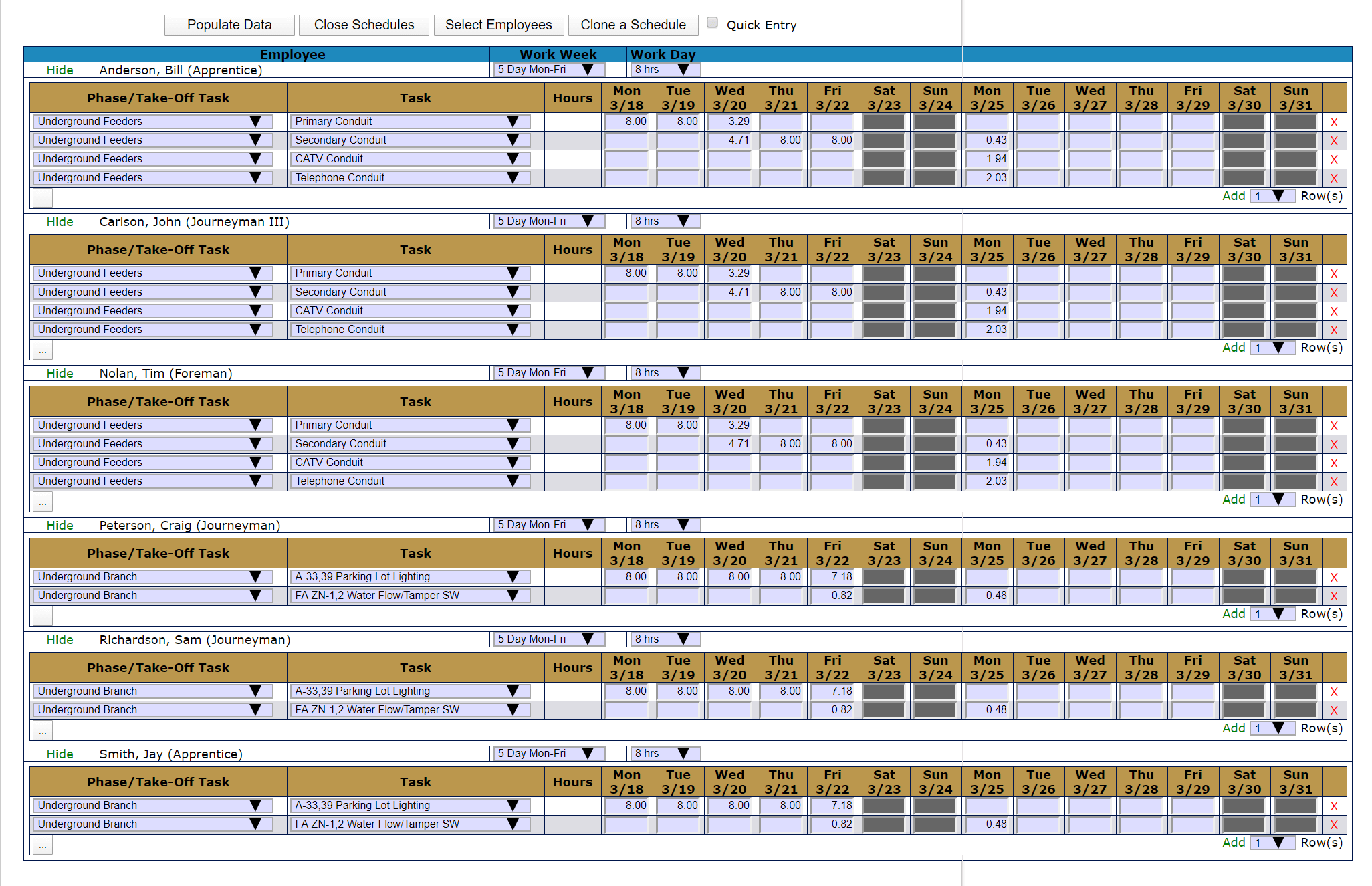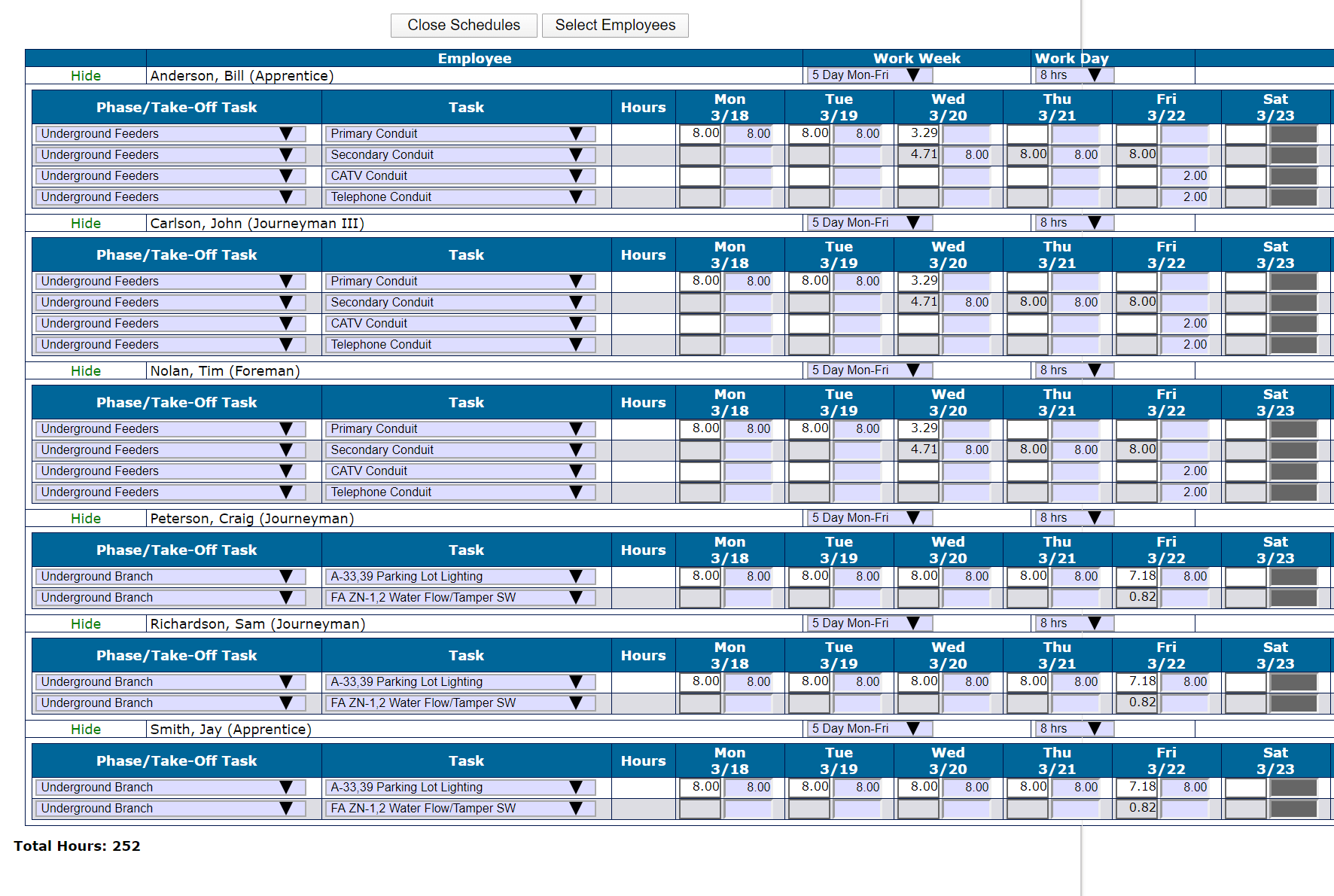

FOR ELECTRICAL CONTRACTORS
As a contractor who builds competitively bid projects, your money gets made, or lost, in the field. That's why we built a platform that drives the organization created in the office by your project management team down to the crew level.
We're going to tell your field workers what to work on, when to work on it, and how long they have to complete it as dictated by your estimate data. Then we're going to track their progress, task by task, all the way through the project to provide daily reporting on the profitability of your project.
But we're not tracking just hours alone. We're going to schedule hours and track dollars. We do this by using each workers actual wage to monitor their progress against each task budget. If your budget starts to turn south of profitable, you'll know about it the day it happens, so you can fix the problem before it affects your bottom line.
A Quick Introduction To Our Profit Ability Scheduling Software

As a contractor that bids on competitive projects, your money gets made, and lost, in the field. That's why we start with an interactive master schedule by importing your estimate data and creating a master schedule the field will understand and your customer will respect. Each task will be preceded by a list of milestones that must be completed before the task can take place, like material deliveries, manpower, equipment, and specialty tools. These milestones can be ticked off in the days leading up to the start of the task by the field team so that your project management team can log in and confirm the status of readiness for each phase of construction.

Next we parse out tasks from the master schedule to individual workers and crews of workers in the form of rolling schedules comprised of tasks built right from estimate budgets. Each task budget is automatically divided by the workers actual wage or the crew average labor rate to determine available hours and assigned so the worker or crew knows the task goal hours. If you want workers to complete tasks on budget, they need to know what that budget is, so we are going to put that information right in front of them every day in the form of rolling schedules.

We capture time daily to compile profitability reports in real time. If something starts heading south of your profit line we want to know about it the day it happens so we can correct the issue before it affects your bottom line. Time entry is a simple process that can be completed by paper, computer, tablet or smart phone. At the end of the pay period all time cards get digitally signed by the employee and their supervisor so there won't be any surprises on payday. Integration with your accounting program or payroll department is no problem at all.
For our solar contractors we also include a Unit Tracker so you can track quantities of material installed. This works hand in hand with the rolling schedules and provides detailed reporting on actual cost of material installed. Units per day are dynamic and adjusted daily to match the required production to meet the demands of the master schedule. In effect, this creates a self updating schedule that is constantly correcting to ensure on time completion. Quantities installed can be reported to the cloud right from the field and are available for review through reporting as soon as they are posted to the system. Daily reports are perfect for Plan of the Day meetings and to evaluate crews for performance every morning.
"Building profitable projects is a 4 step process that can be duplicated time after time"
- Provide each employee or crew with a detailed rolling schedule that tells them what to work on, when to work on it, and how much time they have to complete it.
- Track their progress against each task and report their progress in dollars and cents that everyone can understand.
- Hold short (POD) meetings with the field leaders every morning to review progress. Use this time to applaud success and to apply pressure where needed to encourage budget compliance.
- Monitor progress daily and if budget overruns are encountered engage the management and field teams to find suitable solutions before heavy losses are incurred.
"We provide the scheduling software to make this process simple"
Dennis Thomas